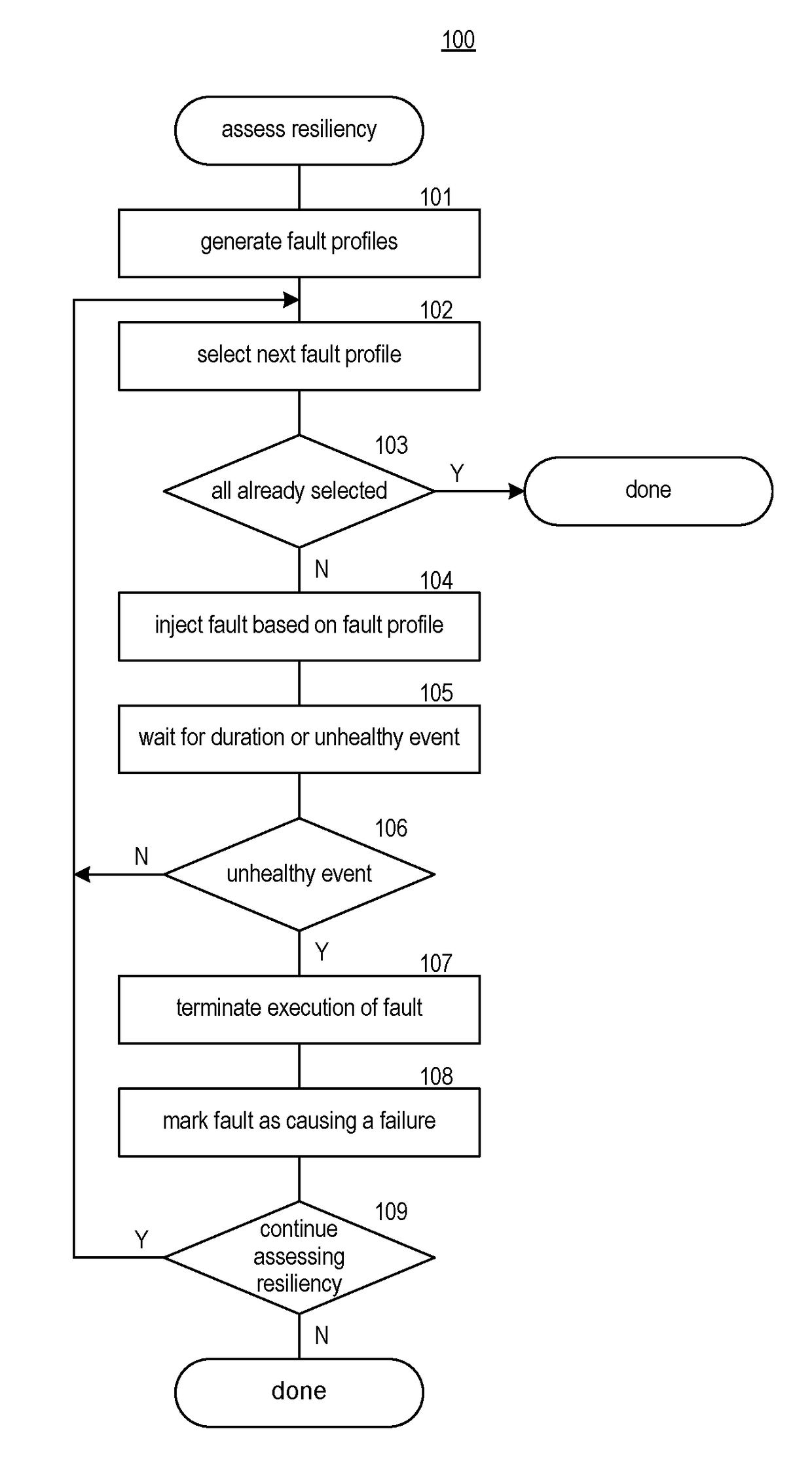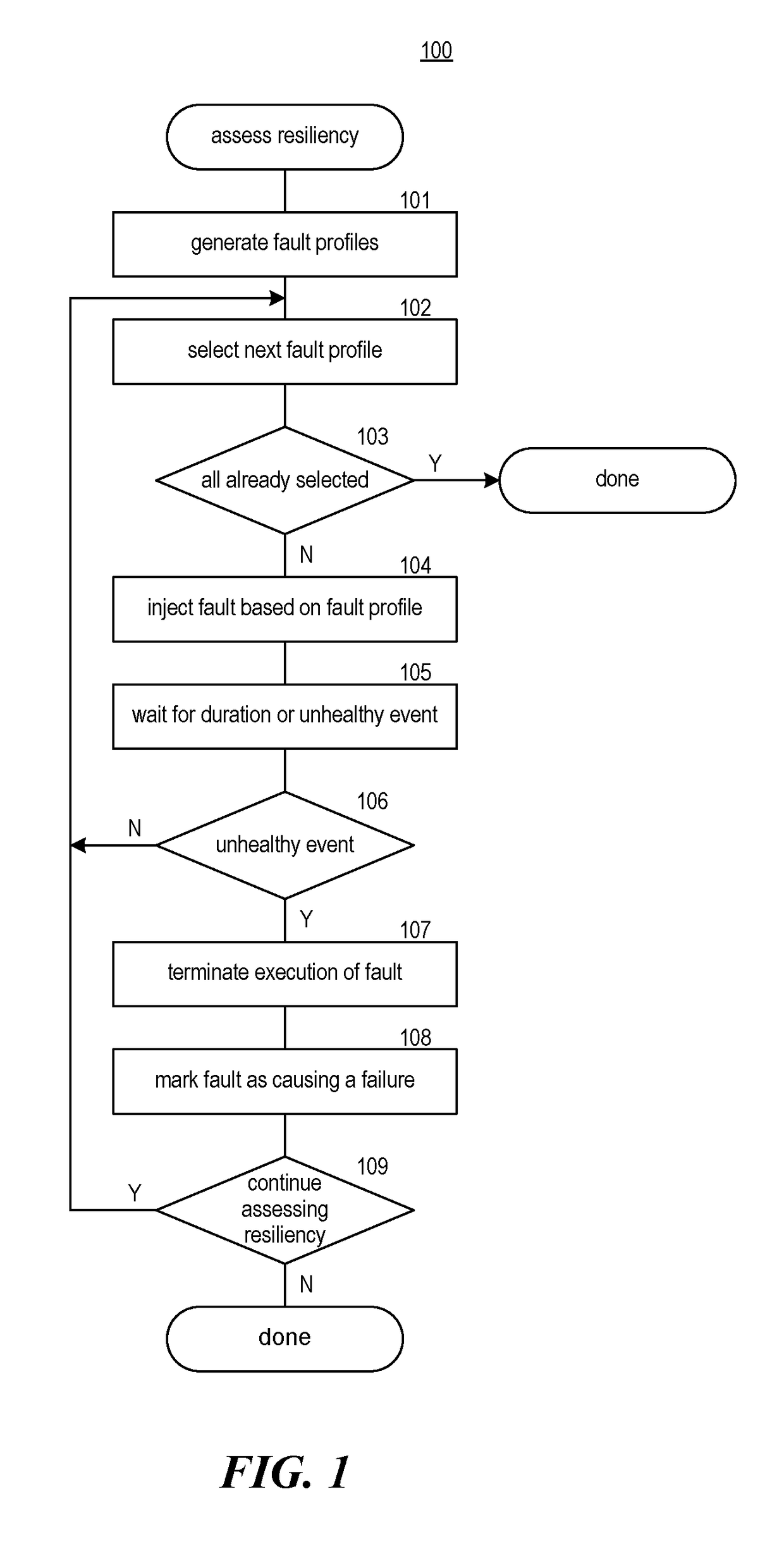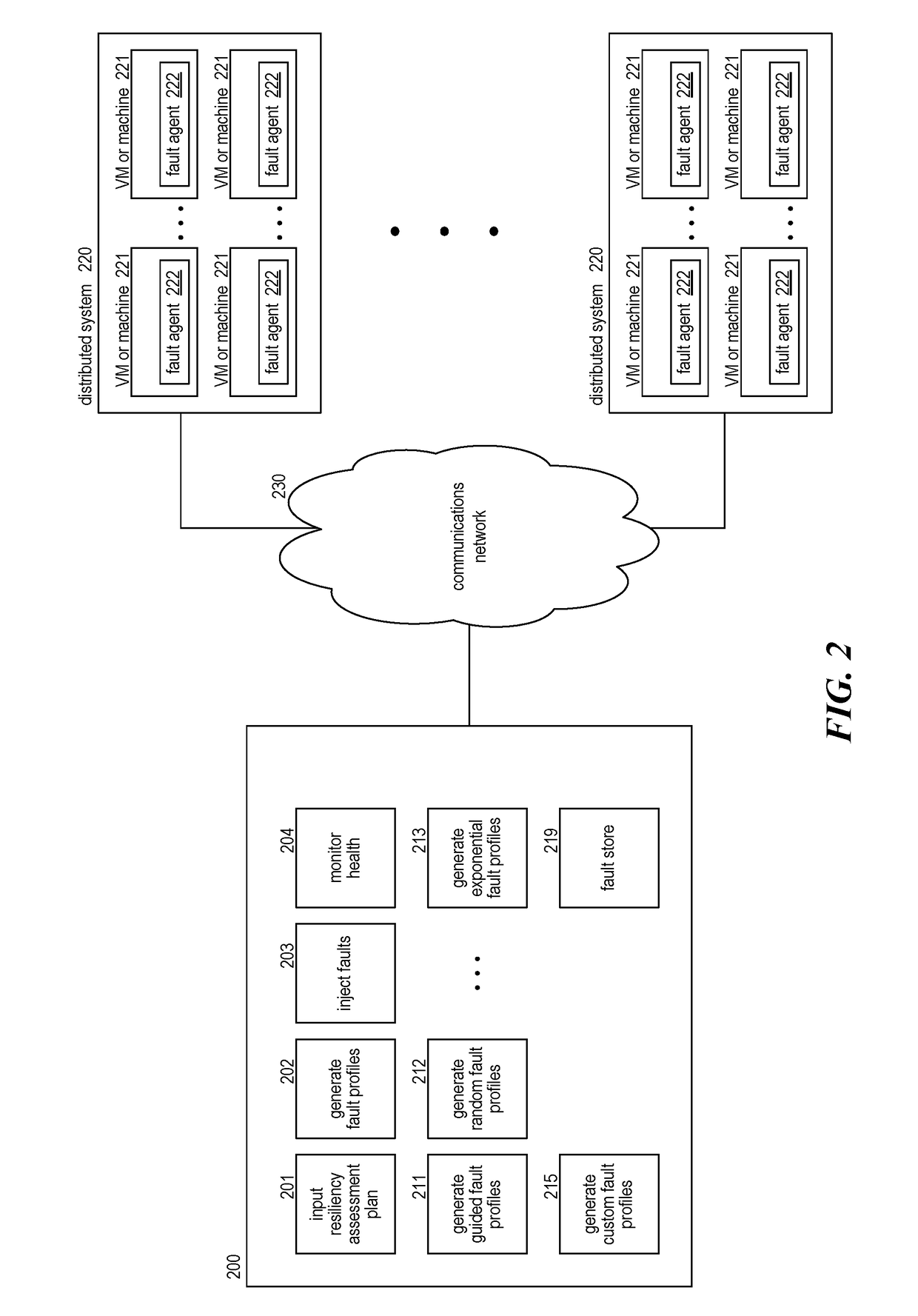Fault generation and execution in a distributed system
a distributed system and fault generation technology, applied in the direction of error detection/correction, instruments, functional testing, etc., can solve the problems of failures in other components of the distributed system, failure of the back-end system that handles the requests of those computers, and the complexity of the distributed system
- Summary
- Abstract
- Description
- Claims
- Application Information
AI Technical Summary
Benefits of technology
Problems solved by technology
Method used
Image
Examples
Embodiment Construction
[0018]A method and system for assessing the resiliency of a distributed system is provided. A fault injection system assesses the resiliency by generating fault profiles, injecting faults based on the fault profiles, and determining whether the fault caused a failure. A fault profile specifies a value for each dimension of a fault. The dimensions of a fault may include fault type, number of machines (e.g., virtual machines), duration of the fault, configuration based on fault type, and so on. The fault type indicates the condition that may result in a fault. For example, the conditions may include excessive memory usage, excessive non-memory storage usage, excessive CPU usage, loss of computer power, a network access problem, a security problem, a process kill, restart, or crash, a corrupt file system, and change in system date, and so on. The number of machines indicates the number of machines affected by the fault. For example, the number of machines may be a percentage of the num...
PUM
 Login to View More
Login to View More Abstract
Description
Claims
Application Information
 Login to View More
Login to View More - R&D
- Intellectual Property
- Life Sciences
- Materials
- Tech Scout
- Unparalleled Data Quality
- Higher Quality Content
- 60% Fewer Hallucinations
Browse by: Latest US Patents, China's latest patents, Technical Efficacy Thesaurus, Application Domain, Technology Topic, Popular Technical Reports.
© 2025 PatSnap. All rights reserved.Legal|Privacy policy|Modern Slavery Act Transparency Statement|Sitemap|About US| Contact US: help@patsnap.com



